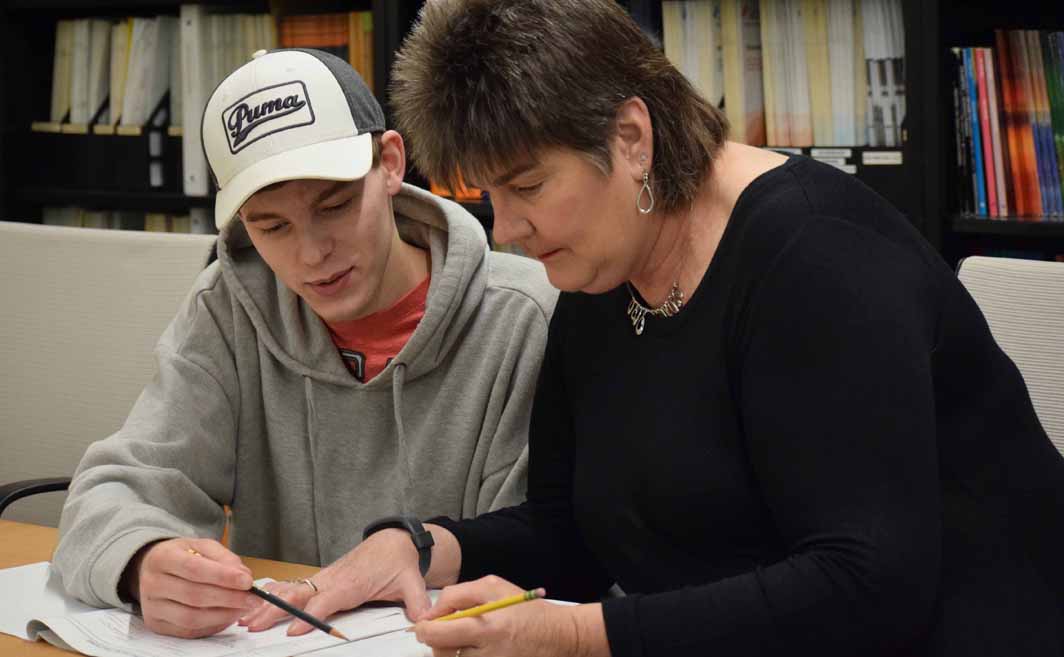Oneida County Jail program provides education option behind bars

BY NAOMI KOWLES
For the Star Journal
Nearly half of all local jail inmates across the country lack a high school diploma or its equivalency, according to Bureau of Justice statistics. Last fall, the Oneida County Sheriff’s Office took steps to change that, by launching a program that offers General Equivalency Diploma (GED) and High School Equivalency Diploma (HSED) courses for jail inmates. So far, the effort spearheaded by Sheriff Grady Hartman has had 25 participants, who are selected based on recommendations and behavior.
The program was implemented as a way to enhance the facility as a temporary destination for state inmates, which in turn provides income for the county, Hartman explained. The state pays $51.46 a day per inmate, which resulted in a net revenue of about $1.5 million for Oneida County in 2017. At a cost of about $10,000 a year, Hartman sees the GED program as a small cost for great results.
“I like to describe being in jail as death by boredom,” Hartman explained. “If we can offer some programs to help take up their time and point them in a positive direction, that’s real important to the overall safety and security of the facility, and the relations that the correction officers have with the inmates.”
Program instructor Darlene Machtan, who works through Nicolet College, gets mixed reactions from people who hear about her job, she noted, with responses vacillating between support and criticism. While critics tell her that inmates shouldn’t have a second chance at an education on the taxpayer’s dime, Machtan wants to see programs propelling restorative rather than punitive justice.
“You’re either going to fund education to stop the cycle, or you’re going to pay for them in prison,” she said. “That’s more costly than education is, short term and long term.”
“I think it definitely helped me grow up and realize I’m not a kid anymore; I have potential.” Kenneth Shoemaker, HSED student
Kenneth Shoemaker is one participant who has nearly completed his HSED, a seven-credit course covering math, science, language arts, social studies, civics, career exploration and health. He says that for him, the program has helped him recognize his own potential.
“I think it definitely helped me grow up and realize I’m not a kid anymore; I have potential. I’m not going to be just a drop out kid; I’ll be taken seriously in interviews, have a lot more chances to go places and do things I want to do.”
Shoemaker, who served a short time and now has a full-time job in car detailing, said the program gave him a sense of structure and comfort as an inmate, where he worked through the large majority of credits needed in just three months.
“Miss Darlene, she was a great teacher,” he reflected. “[She] did above and beyond for her job. She was amazing. She actually still keeps in contact with me…She’s an amazing person.”
“Darlene does an excellent job,” Hartman noted. “She’s animated, and she has a way that she teaches that keeps people interested. Which I think is an absolute perfect fit for the jail.”
For Machtan, teaching the GED/HSED program at the Oneida County Jail has been the most enjoyable part of a career covering a variety of teaching positions. “These guys are by far the most motivated of anybody I’ve worked with. They know they need this; they want this.”
Machtan teaches the course twice a week at the Oneida County jail, where she works with participants of varying education levels which requires highly individualized prep materials. For both herself and many of the students, math proves the most difficult to surmount.
“Reading has to come first,” she noted, saying that she structured her program to build momentum by starting with their strengths.
Many of her students are temporary transfers from inner city areas, she noted, which has been a cultural experience she has enjoyed. And while working with “the guys” has been a highlight of her career, she says it can be a crushing experience when they give up on the program.
“I just want to see them succeed,” she said.
“You treat us like you know we can do this, like you believe in us,” one man told her before transferring out of the facility. “And if you believe in us, then we believe in us…you also tell us that we ain’t working hard enough.”
“You push us to do more, be better, and be faster. That’s what it takes.”
Leave a reply
You must be logged in to post a comment.





